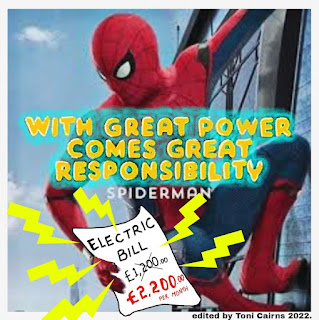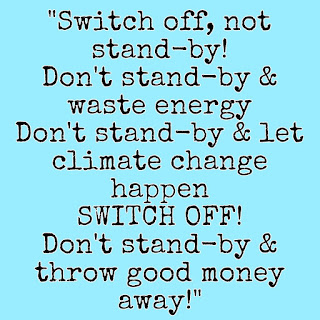Question: How Much Do Tumble Driers Cost Per Cycle (UK)?
Tumble driers
Question: 30th Sept 2022
How much energy does a tumble drier use per load or cycle?
Depends how energy efficient your Tumble drier is? These are what I just found on Currys looking at some models for examples:
Typically quoted by manufacturers is kWh per year based on 160 loads:
*Energy efficient A+++
174kWh per yr or 1.08kWh
194kWh per yr or 1.2125kWh
FULL LOAD 1.54kWh is 54p (10Kg)
HALF LOAD 0.89kWh is 31p
*Energy efficient A++ heat pump
282kWh per yr or 1.7625kWh
FULL LOAD 2.43kWh is 85p (10Kg)
HALF LOAD 1.21kWh is 42.4p
*Energy efficient A+
270kWh per yr or 1.6875kWh
*Energy efficient B Condenser Dryer
670kWh per yr or 4.1875kWh
FULL LOAD 5.7kWh (10Kg) is £1.99
HALF LOAD 3kWh is £1.05p
*Energy efficient C
520kWh or 3.25kWh
FULL LOAD 4.49kWh (7Kg) is £1.57
HALF LOAD 2.27kWh is 79.5p
Average online mostly says about
4.5kWh per cycle is £1.57
(*See below energy efficiency charts changed in 2021*)
Bulb electric rate 1st Oct 2022 is electric per kWh used:
£0.35056 per kWh
(*Some consumers might be paying more or less than my standard variable tariff*)
Some tumble Driers cost about from 30.1p to £1.99
The lowest energy using model I found is a heat pump tumble dryer using 174kWh per yr based on 160 cycles, the drier it self was made by Miele rated A+++ and is currently on sale for £2,199.00.
FULL LOAD 1.47kWh is 51.5p
HALF LOAD 0.86kWh is 30.1p
In comparison to that I find this tumble dryer:
Hotpoint NT M11 9X3E UK Heat Pump Tumble Dryer rated A+++
Connection rate: 700Watts
194kWh per year
FULL LOAD 1.69kWh is 59p
HALF LOAD 0.81kWh is 28.4p
(*Image of product information sheet at bottom of page)
Please note the new energy efficiency ratings are A to G, A = most efficient down to G = least efficent.
If you come across appliances with A+++, A++ or A+ they are from the old energy efficiency chart.
Always best to check how many kWh the appliance uses per cycle and aim for a low figure that is cost effective, more economical, and eco friendly.
If your laundry is coming out of the washing machine very wet:
Check your filter is not clogged
Keep door seals clean and free from objects
Always check clothes pockets are emptied before putting items into the machine
Be sure to not over load your machine this may imbalance the drum
Run a hot service wash through once a month to remove any build up of dirt and grime. Soda crystals or baking soda and white vinegar are good for cleaning washing machines.
If hanging laundry outside
Washing lines are ideal especially when they can be propped up high so they are able to catch the wind
Before hanging an item on the line ensure the item is unfolded and uncreased, give the item a good initial shake
Some dark items may become bleached if they receive too much direct sunlight so some items can be turned inside out before hanging then out
Spread the items out along the line and peg them
Larger items that require being folded may dry quicker if they are turned and flipped half way through drying
Keep an eye on the weather and try to plan washing laundry when weather is better
I find trying to get laundry out to dry early like before 10:00am gives it a much better chance of drying because the warmest part of most days is at midday
Have you considered ways in which you might be able to reduce the amount of overall laundry you do?
Can you wear a your jumper another day?
Can you wear your pyjamas another night?
Is the item of clothing soiled so needs to be washed, or can the item be hung out to air and freshen then be worn again?
How often do you wash towels? I read a suggestion online that said when getting out of the bath or shower wipe most of the excess water away from your body using your hands, before using the towel
How often do you wash bed sheets? In the colder seasons we don't sweat as much during the night, and so can get away with washing them less often
However certain things become more dirty like dish clothes, tea towels and flannels
It can be difficult to find a new model appliance online that is energy efficient, Currys AO.com Hughes do have a filter to search for the various energy efficient ratings and some other online shops also do. I have noticed
Energy ratings
A+++ was the most efficient on the old chart, now A is the most efficient down to G being the least efficent. If you come across A+++, A++ and A+ you will know immediately they are from the old energy efficient chart.
This is the new chart you will come across when looking for new appliances, rating A is more efficient whereas G is the least energy efficient.
This chart compares what the energy ratings were before the chart changed and what they are likely to be after it changed.
This chart shows that A+++ appliances might be B, C or D on the new chart.
This chart shows A++ appliances might be D or E on the new chart.
This chart shows A+ appliances might be E or F on the new chart.
Be aware that if you see an A rated appiance, check it's kWh use, because it might be rated by the old energy efficiency chart.
Be aware that if you buy appliances from international online shopping sites like Amazon, that some appliances are rated with the Euro chart which is different from the UK ratings.
This website explains a little more about energy ratings
https://www.euronics.co.uk/new-energy-label
Personally I chose a quick low temperature 30° wash cycle on my washing machine with a high spin option. Sometimes I run an extra spin after calculating it takes 11.5 minutes. It's best not to over load the washing machine because things do not spin as well in really big loads, so over loading causes laundry to be wetter
Drying laundry indoors is not really a very good idea for people who have respiratory conditions, and so if this is carried out, then your home will require plenty of air movement and ventilation to prevent a build up of condensation, that potentially may lead to damp and mould problems.
Placing clothes on radiators may potentially reduce the heat from circulating throughout the property, and will likely cause the heating system to use more energy to do the same job.
When drying indoors I am now trying placing items on clothes hangers on curtain pole next to an external windows, then leave it open ajar about half an inch, then close internal door and block with a door pillow this helps to prevent condensation in your home.
I am learning to keep a closer eye on the weather and trying to plan ahead for when the weather is likely to be better for drying. And I am trying to do laundry earlier and get it back indoors where possible before 4pm.
I need to find myself a good weather app?
I joined two 3 part air driers together to make a 6 part, which folds up flat even with clothes on, then I can easily transport it in or outside when needed. This helps when the weather changes quickly transport laundry indoors.
However I am now considering having a proper lining line outdoors that allows for plenty of space. I think being able to shake laundry well first, then hang it up well spread out may help it dry more easily.
My tip if you still require the use of a tumble dryer is to try to only use it for little items like socks, and items that are more difficult to dry outside.
If using indoor air dryer it really is best to spread laundry out as best you can.
Some people have said pop the laundry back in for another spin cycle?
Spin cycles do require more energy, so I am not really sure if this would be beneficial for everyone.
I have trialled it once with cotton bed sheets and I weighed them before doing an extra spin only cycle and after, the items weighed about 500 grams less, that is equivalent to about a pint of water.
My spin only cycle took 11.5 minutes.
I am guessing this used about 0.176kWh at my Oct 2022 electric rate of 35.06p per kWh, the spin only cycle would have cost about 6p extra.
Typically I use 30 minute rapid cycle.
My machine is an Indesit 6Kg 1200rpm rated A++ on a 60° cotton cycle it uses about 0.92kWh.
I need to monitor to see the actual energy use?
Gravity Spin Dryers
Another type of drier is a gravity spin drier there are some on the market that only use 30Watts per hour or 0.03kWh!
The 30W gravity spin dryer can be used 33 times before consuming 1kWh of electricity! This model is made by English Electric.
At current unit price of 35.056p kWh the 30W model costs about 1p each spin.
So as an addition to your home could potentially save you money by reducing the time you have your tumble drier on, or maybe it could replace your tumble drier altogether?
Some other gravity spin driers on the market use 300W, that's ten times as much.
I can take a 9Kg load of washed laundry split it into two loads and spin them. Spin cycles take from 3 minutes up to 10 minutes, then leave spinner to rest for at least 5 minutes, before doing the second load. This removes in excess of 1Liter of water in about 25 minutes. If you then hang laundry to air dry hopefully outdoors, but if not in a room Indoors where a window can be left open an inch, and the internal door is closed, this prevents condensation in the home and dries laundry fast. I have not noticed any increase in my electric use, by buying and regularly using a gravity spin dryer.
Hotpoint NT M11 9X3E UK Heat Pump Tumble Dryer rated A+++
Product information sheet:









Comments
Post a Comment